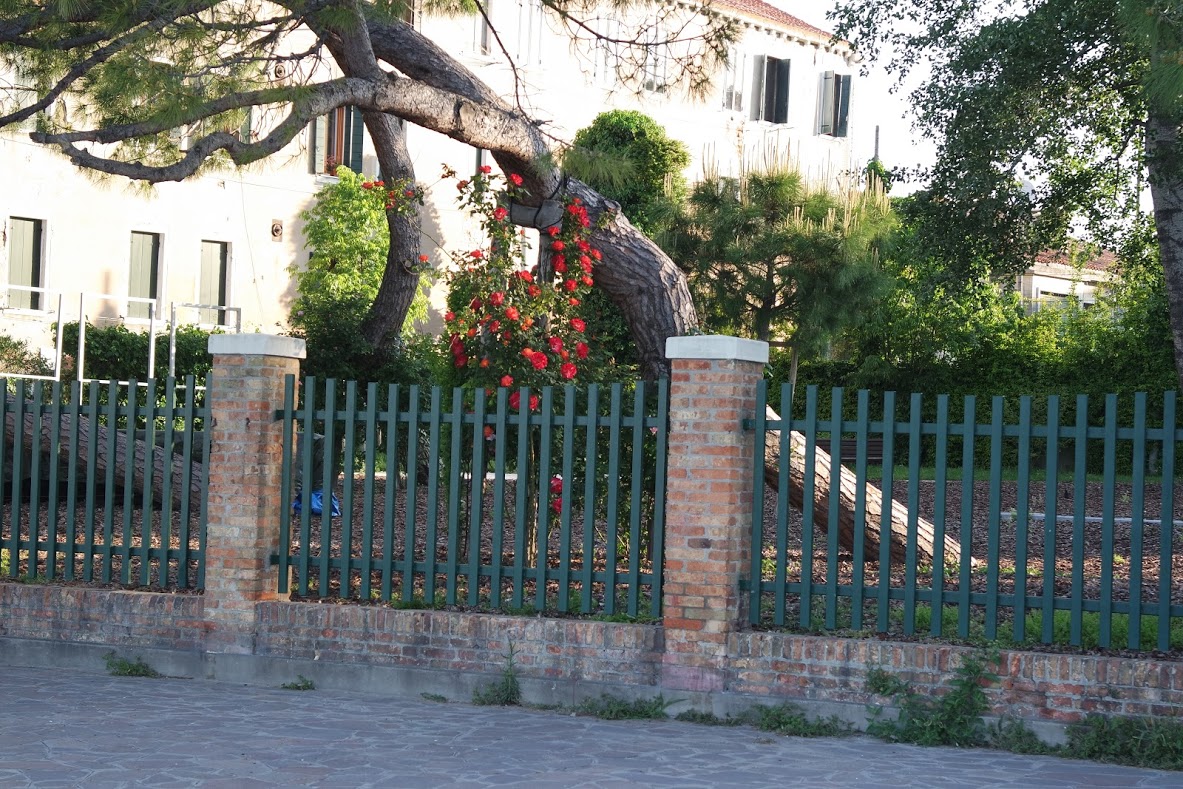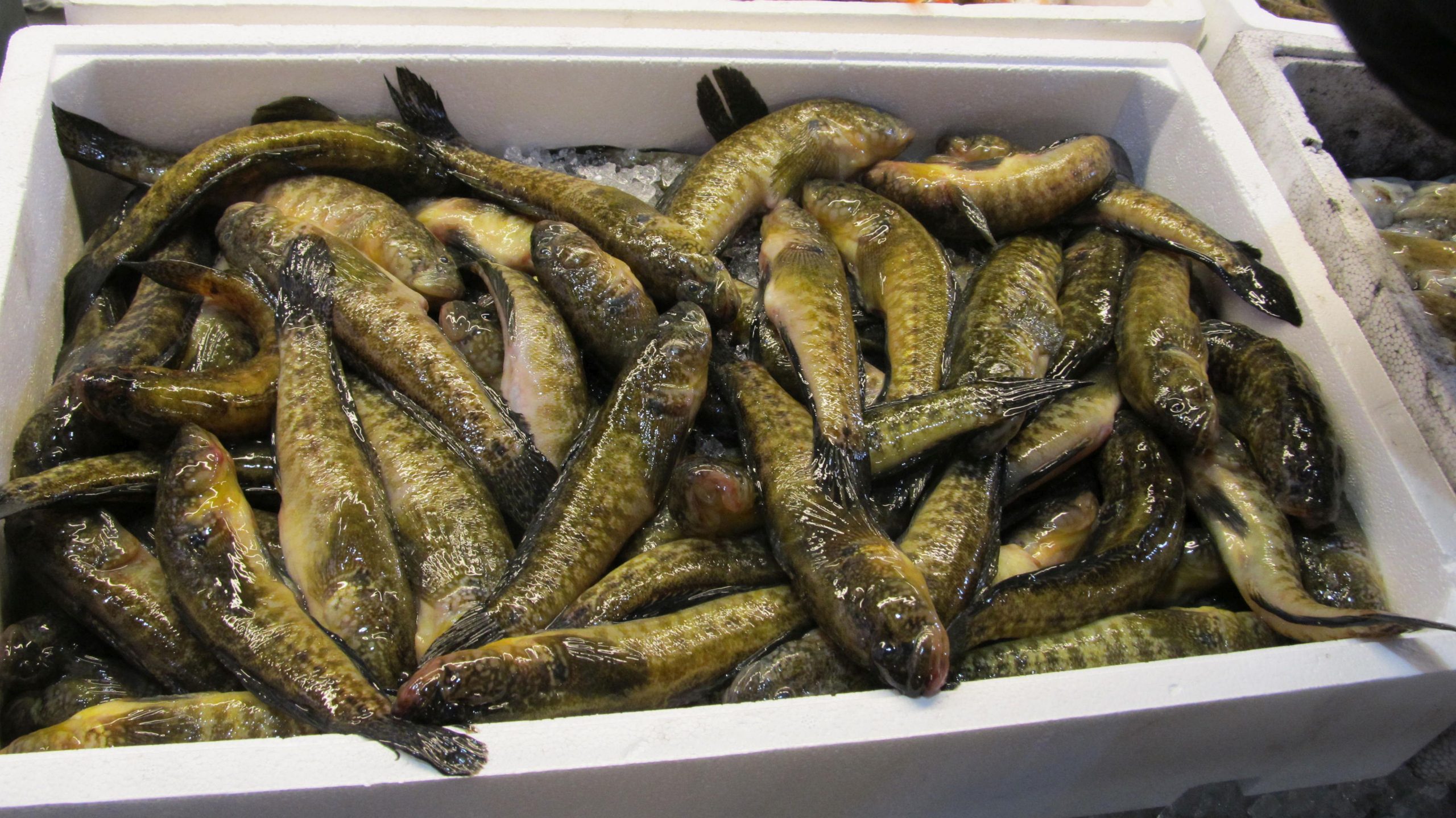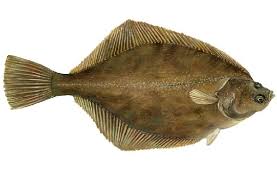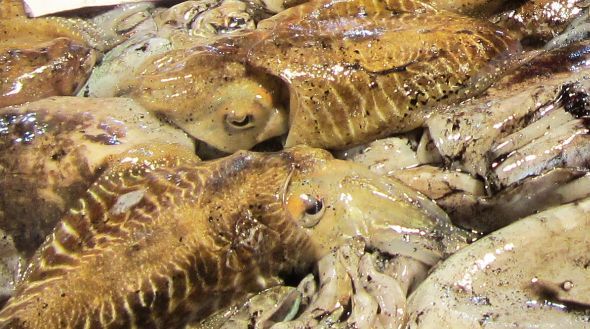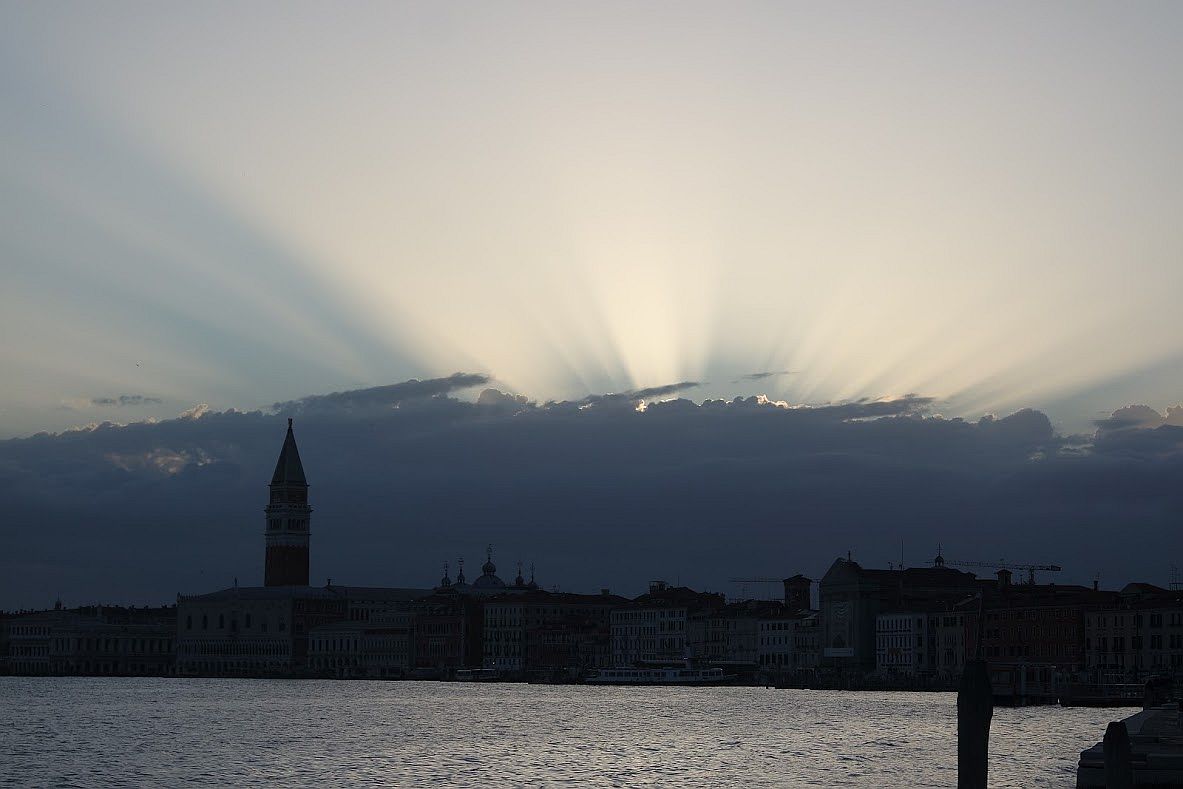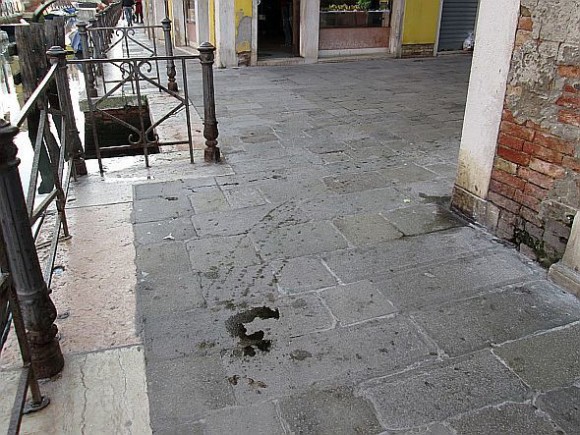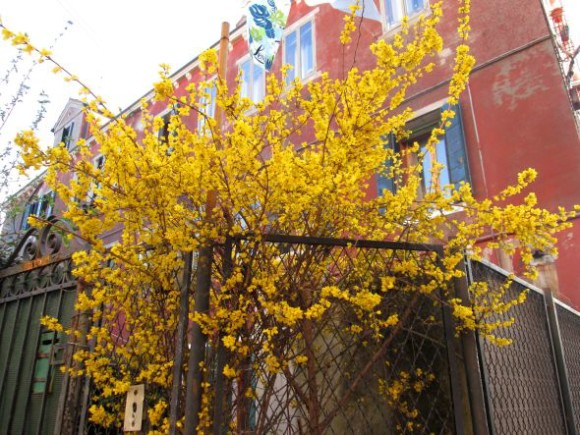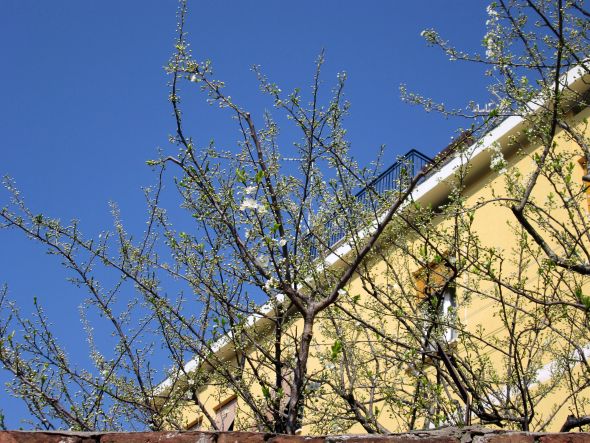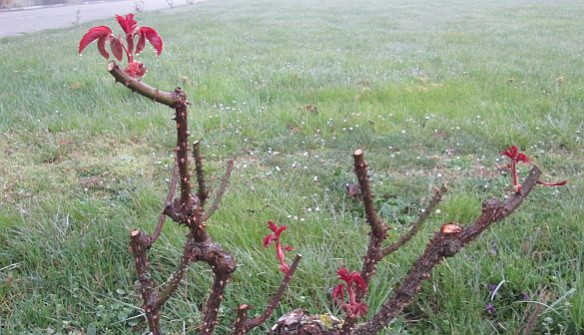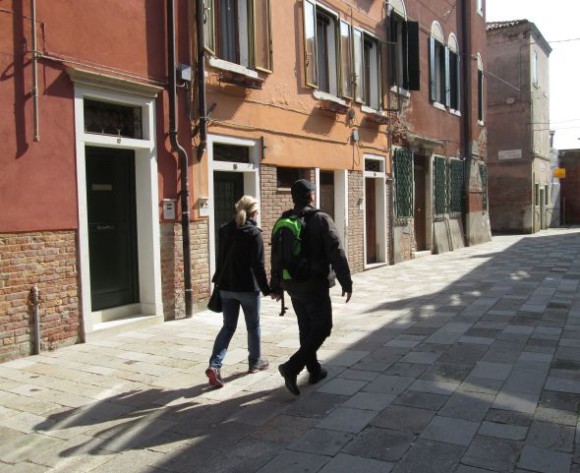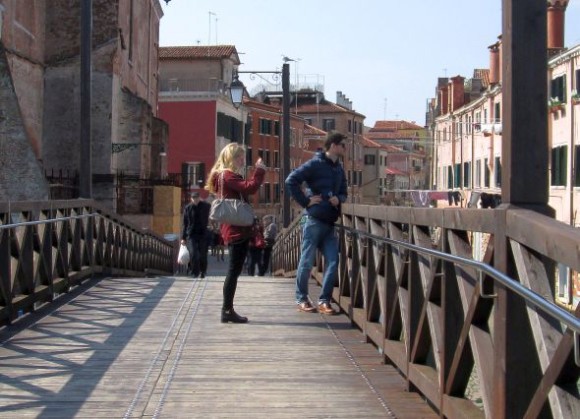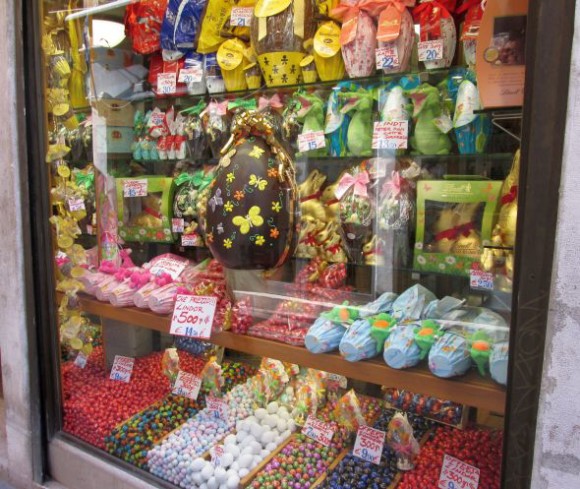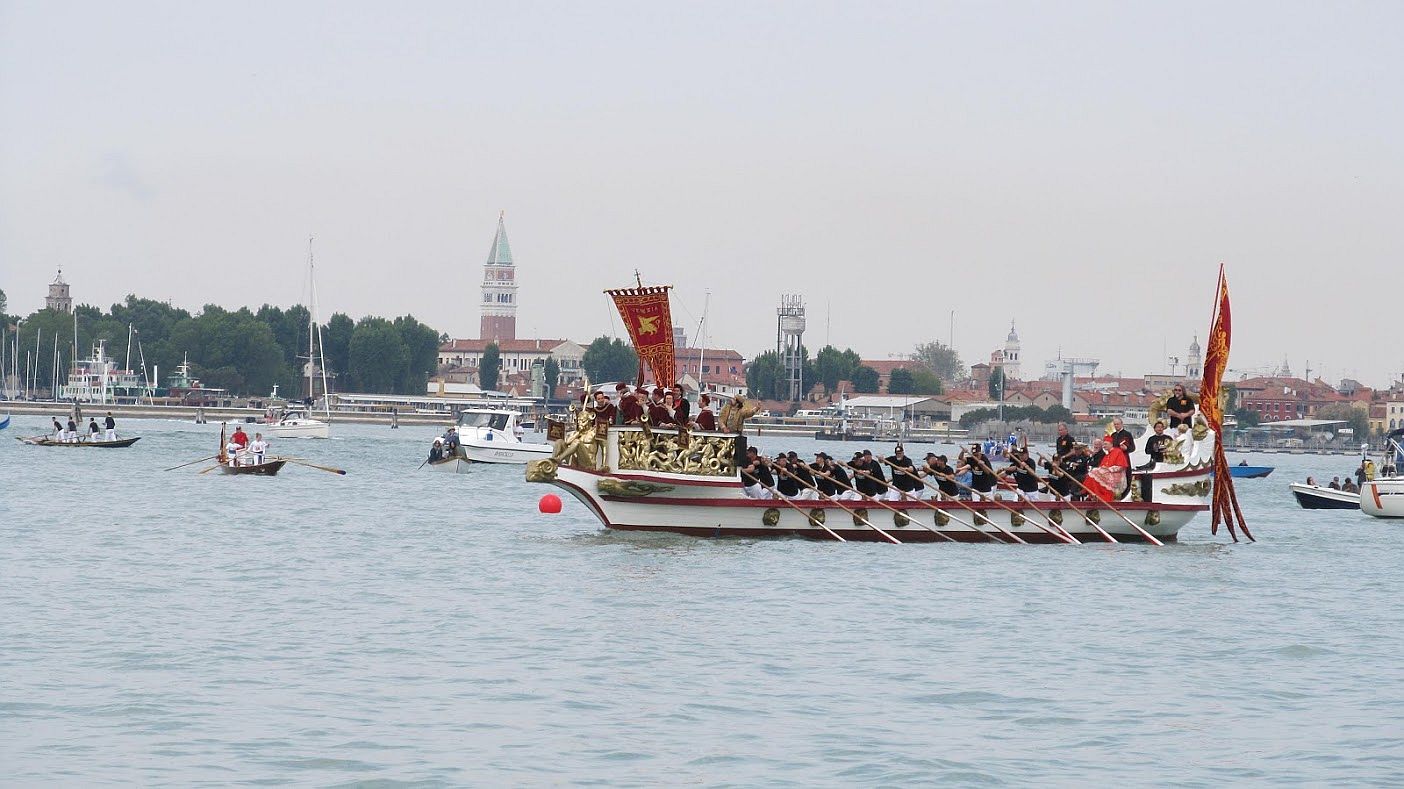
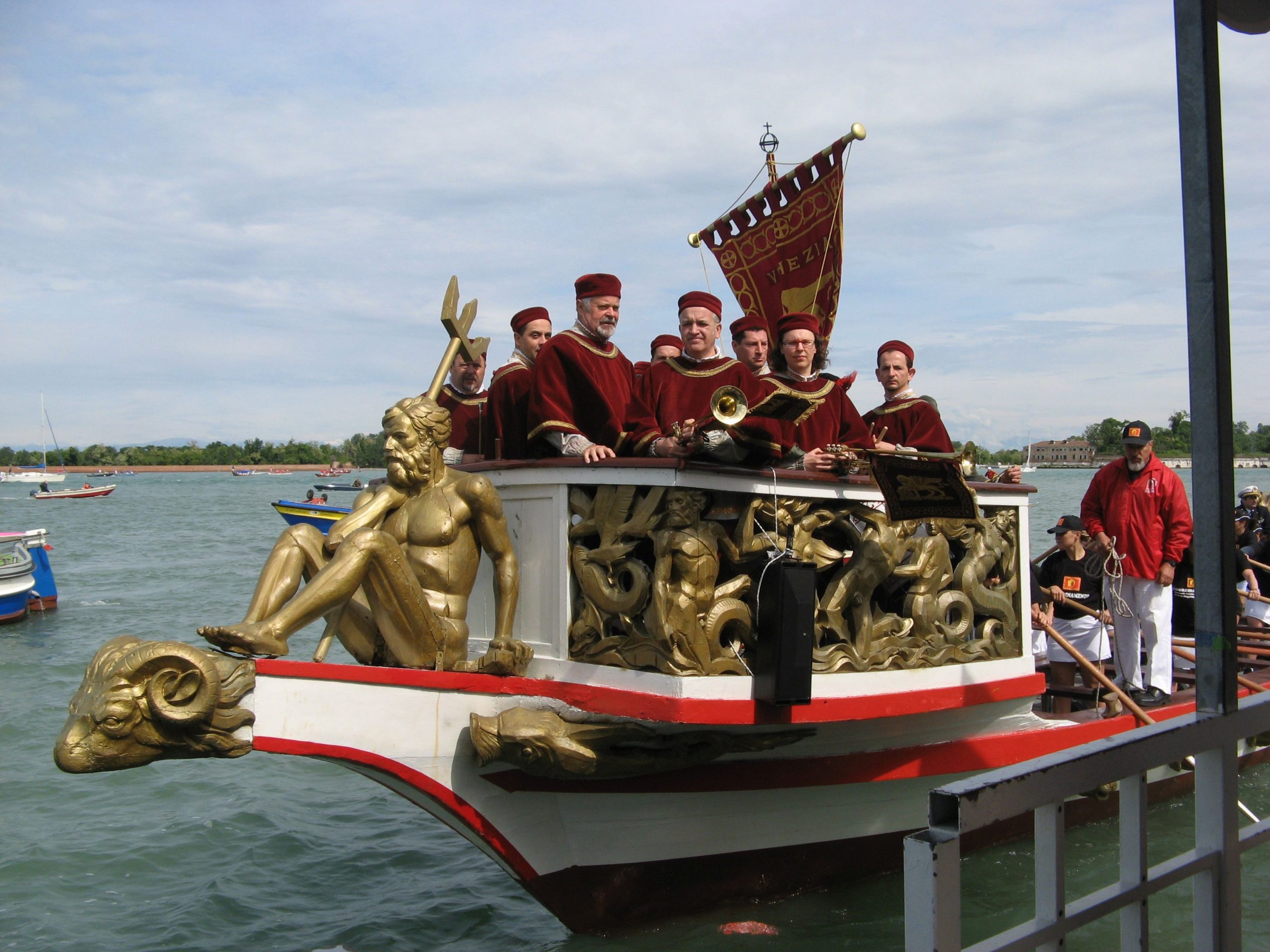
May is a special month to many people, for many reasons. I believe a million poets have made that observation.
For me, the month of roses and gobies and European flounder (there is definitely a poem in there waiting to be lured out), has always been one of the most stressful in the whole year. I would begin dreading May in February, because of two enormous, hence exhausting, annual events that involved Lino and me: the festival of the Sensa (Ascension Day) and the Vogalonga. (“Involved” means planning as well as execution; Lino is part of the Committee of the Sensa, and I would work in the registration office of the Vogalonga for the two weeks leading up to the event.)
Then I would participate in both events — the boat procession, or corteo, for the Sensa, proceeding from Venice to the Lido, and the Vogalonga, which when everything went well would take a good five hours. Things did not always go well; one year it took us seven hours to complete it, due to contrary wind and/or tide, some less-than-prepared rowers in our boat, etc. That’s not a complaint, just a statement. These things happen and you just grit your teeth and carry on. Apart from the rowing itself, we’d see many friends only once a year for the Vogalonga, so any empty spaces in the calendar or the energy of that weekend were filled with convivial (fancy word for “running far into the night”) gatherings in apartments, restaurants, boats, etc.
But this May is abnormal, melancholy, bizarre, because both events have long since been canceled, taking all that annoying confusion, exhaustion, and tension with them. And I’m still not happy! Because this is weird!
The Sensa has been reduced to the commemorative mass at the church of San Nicolo’ on the Lido; it will be attended by the usual personages, but there will be no boats, no tossing of the wreath or the ring, and no races. Why? Because GATHERINGS ARE FORBIDDEN. People would want to GATHER along the shore to watch, and the rowers would certainly be gathered in their boats (forbidden), and the boats would be gathered, and just no.
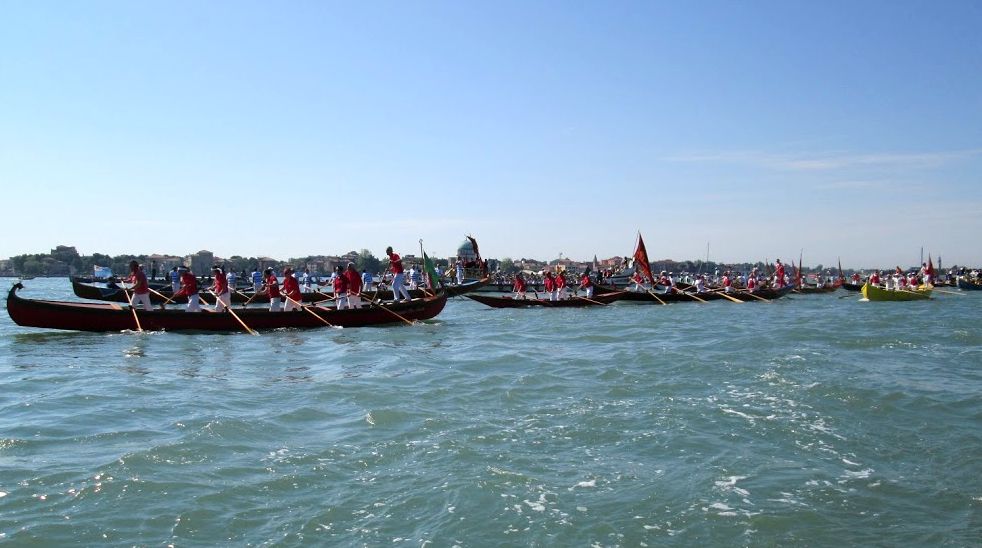
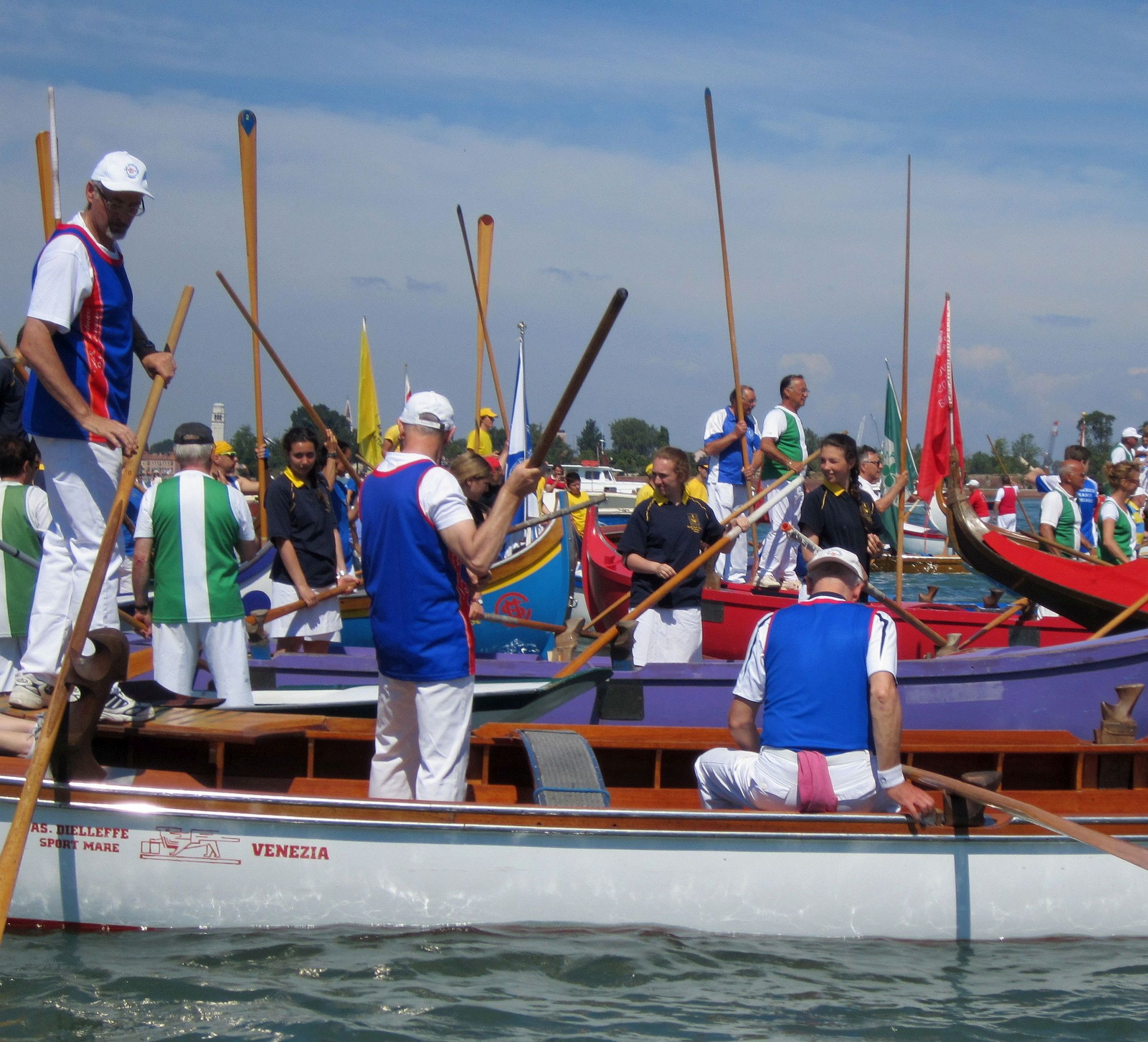
I suppose some private boats could form a procession, each one rowed by the permitted maximum of two people, but that would be even sadder than no boats at all. I told Lino I thought it would extremely cool if every boat club would send their big representative boat, but instead of a full crew each one could be rowed by two people (even the boats that are set up for ten, or 12, or 14 people) or — even better! — rowed by just one person. He said he didn’t think there were that many individuals capable of rowing a big boat by themselves, so there goes that little inspiration. Also, only I have this sort of crackpot idea.
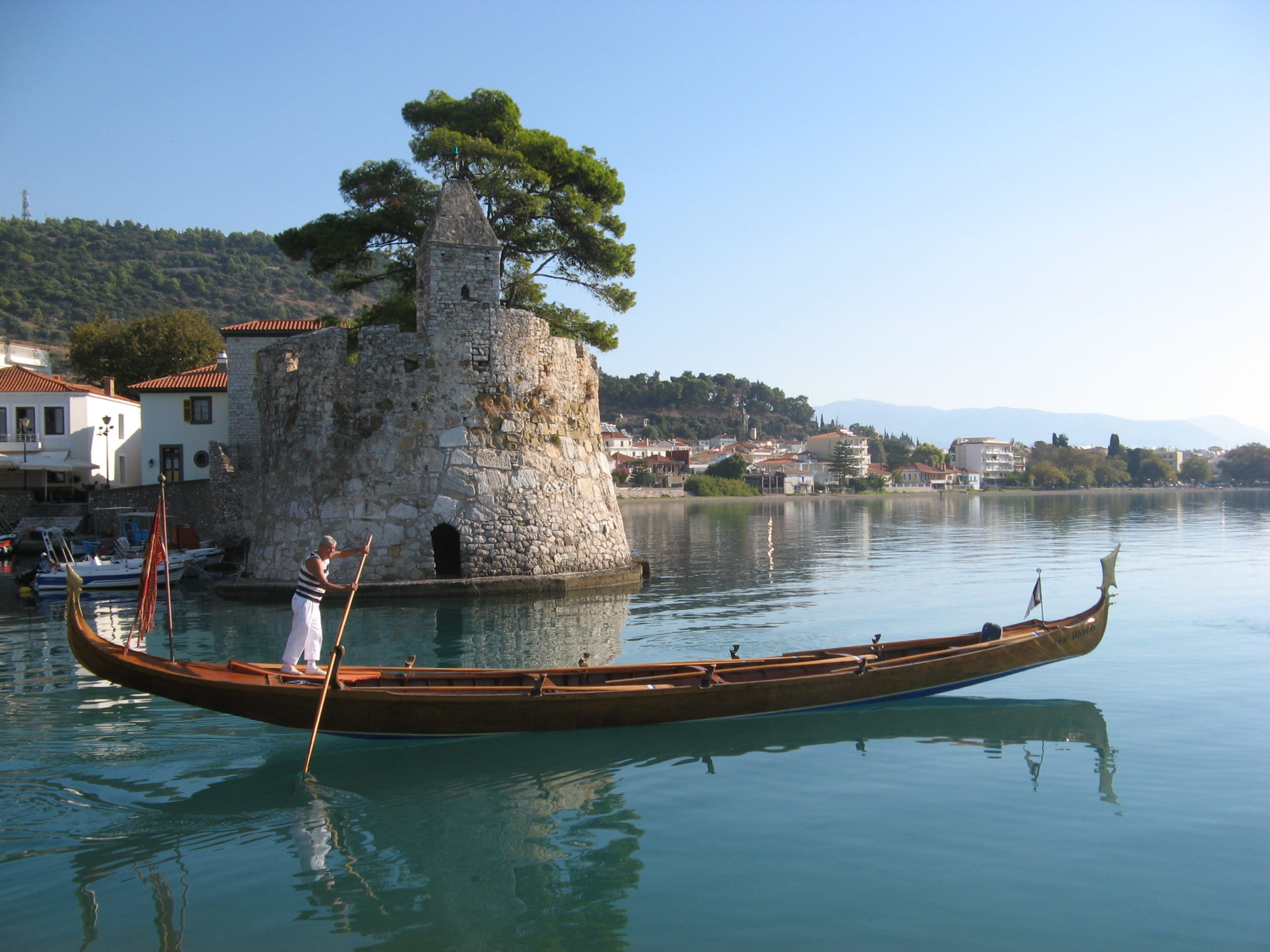
But back to reality. The limitations on rowers would make it impossible to form a corteo. Here is the list of regulations from our boat club; notice that using the boats requires booking a time slot to ensure that only the rowers going out are permitted to even be in the clubhouse. Fine, it was just a fantasy.
“It is forbidden to use the changing rooms and showers in the club. Boats may go out with one rower. Boats with two rowers can go out if they respect the minimum distance of two meters between them in the boat. More than two rowers can go out without respecting the distance requirement EXCLUSIVELY if they are family members who are living together. Use of the mask is OBLIGATORY (worn in the correct manner, that is, covering the mouth and the nose) before and after rowing (one boards and descends from the boat with the mask on). Booking the time of going out and returning will be made EXCLUSIVELY on the WhatsApp group of the club, allowing 20 minutes between exit and return time in order to avoid meetings (overlapping, running into other people, however you want to put it) in the clubhouse. If on return you find that another boat is preparing to exit the club, wait at a distance till the other boat has departed. Seeing the situation, to guarantee the safety and health of all members, the Council of Directors will look at the recorded videos to ensure that all the members respect these rules. Anyone who goes out MUST, on return, wash the club’s boat and oars with water and bleach-based soap provided in the club.”
The Vogalonga — this year would have been the 46th — was scheduled, as always, a week after the Sensa — May 31, to be precise. It has never been canceled, even in the worst weather. A pandemic is clearly so much worse than weather. Besides, no one can travel, the hotels are closed, and just to review the basics: Gatherings of people are forbidden. If some 2000 boats in the water don’t constitute a gathering, then we need a new definition.
So the two big events that made May matter have been expunged and left only its husk ready to fall off the calendar just like March and April have already done. What an ignoble end to a once-princely month.
Happily, spring is proceeding with its usual nonchalance, bestowing any number of special gifts (do they still qualify as gifts if you count on getting them every year?). Blackbirds singing at dawn and at sunset, the limetrees just beginning to waft their delicate perfume along viale Garibaldi, the first magnolia on the tree next to General Emo Capodilista. The signs of the season haven’t failed us.
And we’re well underway with the artichokes (their moment is almost over), and fresh peas and asparagus. The fruit is in that awkward stage between winter and summer — we’re bored to death with apples and bananas, but the first cherries are expensive and flavorless, the apricots should be ashamed of pushing themselves forward so aggressively because they are definitely not ready yet, and some vendors are offering melons, for Lord’s sake. Everybody knows that melons were put on this earth to save your life in July and August; in May you might as well just sell photos of melons, the taste would be the same.
Fish, however, are having their moment. “Quando la rosa mette spin’, xe bon el go’ e el passarin.” When the rose puts out its thorns, the gobie and the flounder are good. Seppie belong in this category too, but it doesn’t rhyme.
Lino, who has fished all year long all his life, tells me this: “The go’ are always in the lagoon. The passarini lay their eggs in December and go out into the Adriatic; they come back in between March and April. The seppie begin to come into the lagoon in March. In May and June the gilthead bream, striped seabream and sea bass come in to lay their eggs….” I know things are proceeding according to plan because we have seen little swarms of fingerlings in the canal several times.
